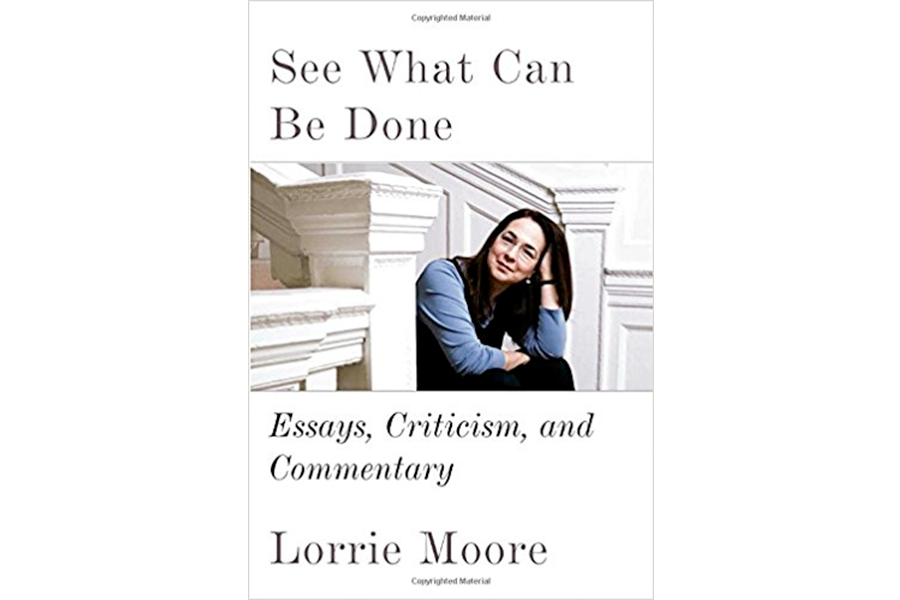'See What Can Be Done' is a testament to the breadth of Lorrie Moore’s intellect
Loading...
See What Can Be Done, novelist and short story writer Lorrie Moore’s first nonfiction collection, takes its name from the words of Robert Silvers, the late editor of The New York Review of Books.
When Silvers would send Moore a book for possible review, “See what can be done” was invariably written in an accompanying note. “It was a magical request, and it suggested that one might like to surprise oneself,” Moore tells readers. “Perhaps a door would open and you would step through it, though he would be the one to have to put it there in the first place.”
Silvers’s directive is a reminder that while fiction authors usually choose their subjects, writers of nonfiction – the scribes behind reviews and magazine essays – often have their subjects assigned to them. That gives the writer less autonomy to shape the material, so when it’s assembled between covers, an author’s nonfiction can seem, to borrow an observation frequently attributed to Winston Churchill, like a pudding without a theme.
But variety can also be one of the sharpest pleasures of a book like "See What Can Be Done," which is nothing if not diverse. A successful freelancer must be curious about a great many things, and this collection, which draws on material from the past three and a half decades, is a testament to the breadth of Moore’s intellect. There are pieces here on everyone from Nora Ephron to Kurt Vonnegut to Edna St. Vincent Millay, and everything from Christmas to pop songs to 9-11. Cumulatively, they answer a summons Moore set for herself, a variation on Silvers’ invitation: “Pick a thing up, study it, shake it, skip it across a still surface to see how much felt and lively life got baked into it.”
What unifies these pieces – what must galvanize any such collection – is the author’s voice, a prevailing sensibility. Moore’s manner of looking at the world, memorably described by Joyce Carol Oates in reviewing Moore’s fiction, equally applies to her nonfiction work: “a unique combination of wit, caustic insight, sympathy for the pathos of her characters’ lives, and that peculiar sort of melancholy attributable to time too long spent in the northern Midwest where late-afternoon snow acquires a spectral blue tinge.”
There is, indeed, an edge to Moore’s vision, sardonic and self-deprecating, as in the essay “Christmas For Everyone,” in which she tries to approximate an iconic holiday, only to have it snuffed out by a malfunctioning flue and a broken boiler. It’s a case study in how life is messier and more complicated than it initially appears – a reality that runs through Moore’s novels, such as "A Gate at the Stairs" and "Anagrams," and that informs her literary criticism, too.
She’s especially perceptive at navigating the nuances of Eudora Welty, a celebrated Southern writer too often reduced to a benign maiden aunt of American letters. Moore explores the inevitable challenges that must have resulted from Welty’s status as a public figure in her native Jackson, where she lived, in Moore’s imagining, “as perhaps a kind of political prisoner, held hostage by southern graciousness.”
In assessing authors such as Welty, V.S. Pritchett and John Updike, Moore tackles subjects of some durability. Not all of the selections in "See What Can Be Done," though, enjoy such an extended shelf life. This is especially true in her political pieces, which can have the brittle, yellowed quality of old news. Is there much benefit, for example, in embalming Moore’s 1998 commentary on the Bill Clinton-Monica Lewinsky scandal for posterity? While some writers – George Orwell comes to mind – can draw on the passing political scene to affirm timeless truths, it’s no great discredit to Moore to acknowledge that she’s no Orwell. Her political commentaries, though no doubt engrossing at their time of publication, seem in retrospect rather ragged and dog-eared, like the moldering magazines one finds in the waiting room at the doctor’s office.
In “On Writing,” an exploration of her literary origins, Moore mentions her childhood habit of hearing music on the radio, then “drawing” the song on paper. Moore’s gift for interpreting a popular medium in language is evident in her TV criticism, in which she deftly recreates and considers the experience of watching such shows as “The Wire” and “Friday Night Lights.”
“One must throw all that one is into language,” she writes, “like a Christmas tree hurled into a pool.” At its best, "See What Can Be Done" is not only a call to that ideal, but a fulfillment of it.
Danny Heitman, a columnist for The Advocate newspaper in Louisiana, is the author of "A Summer of Birds: John JamesAudubon at Oakley House."






